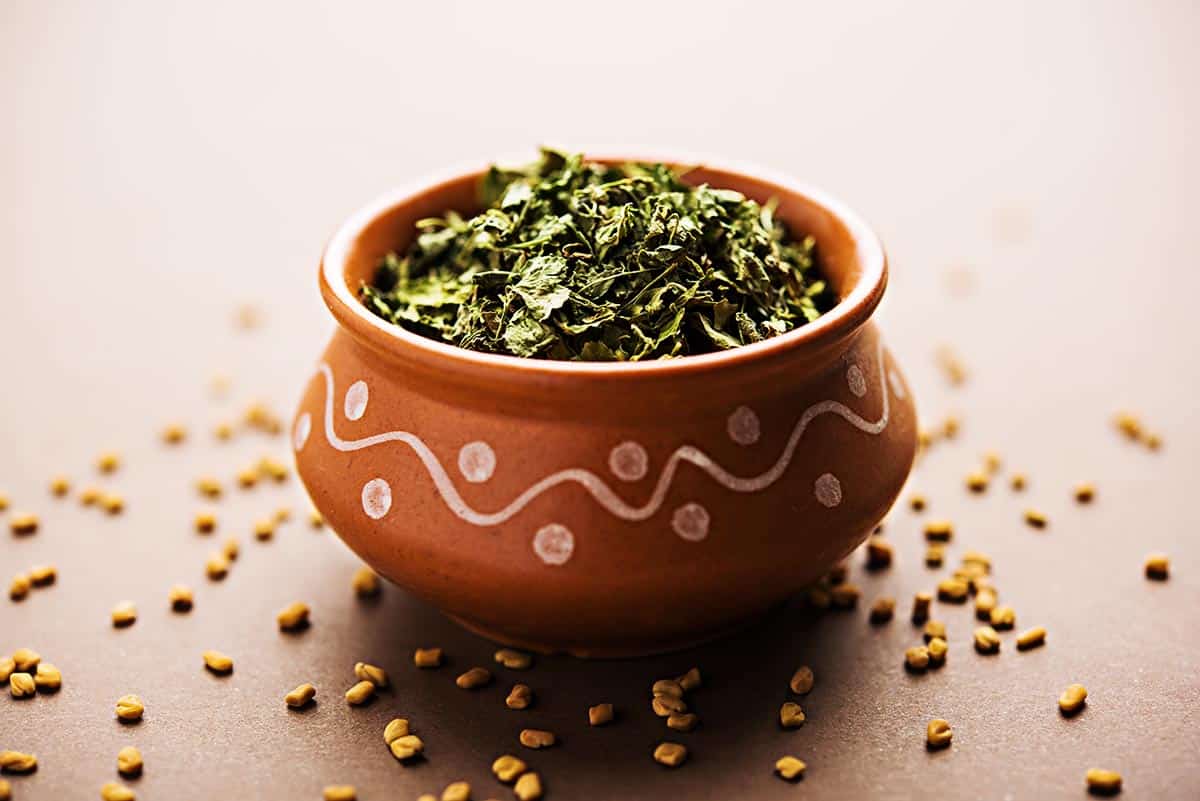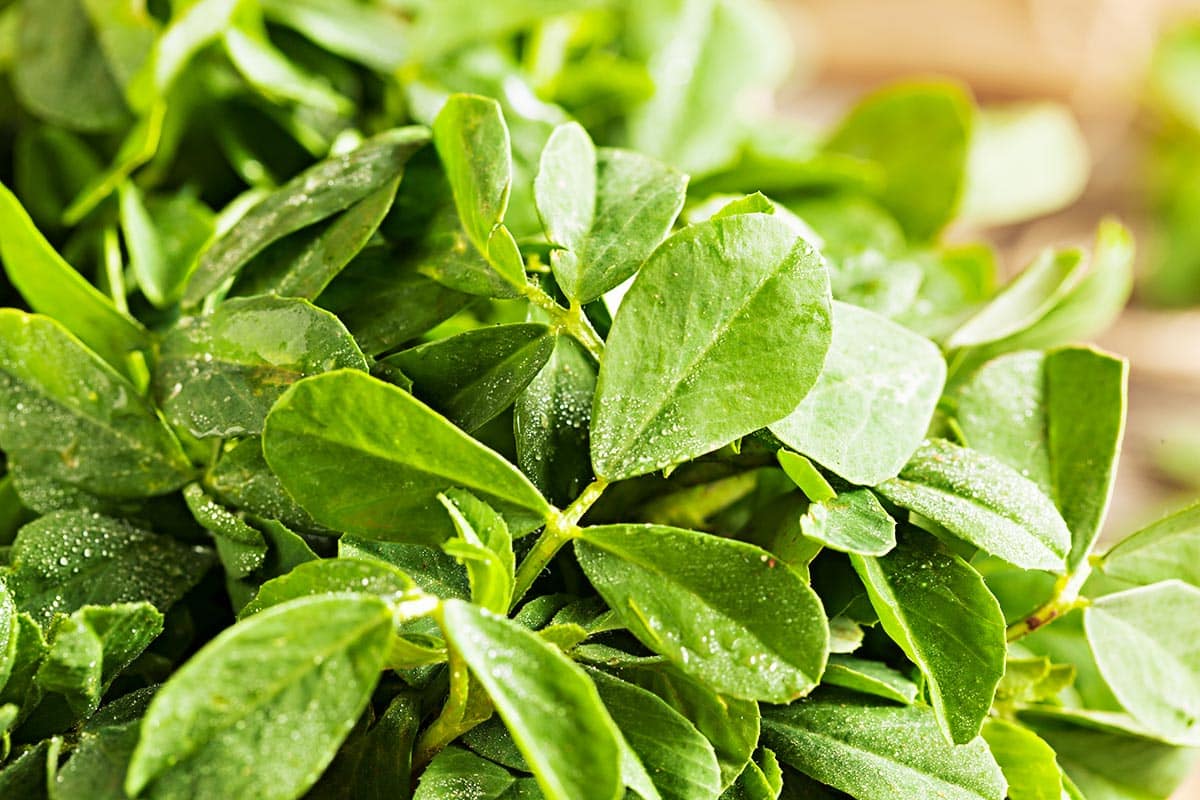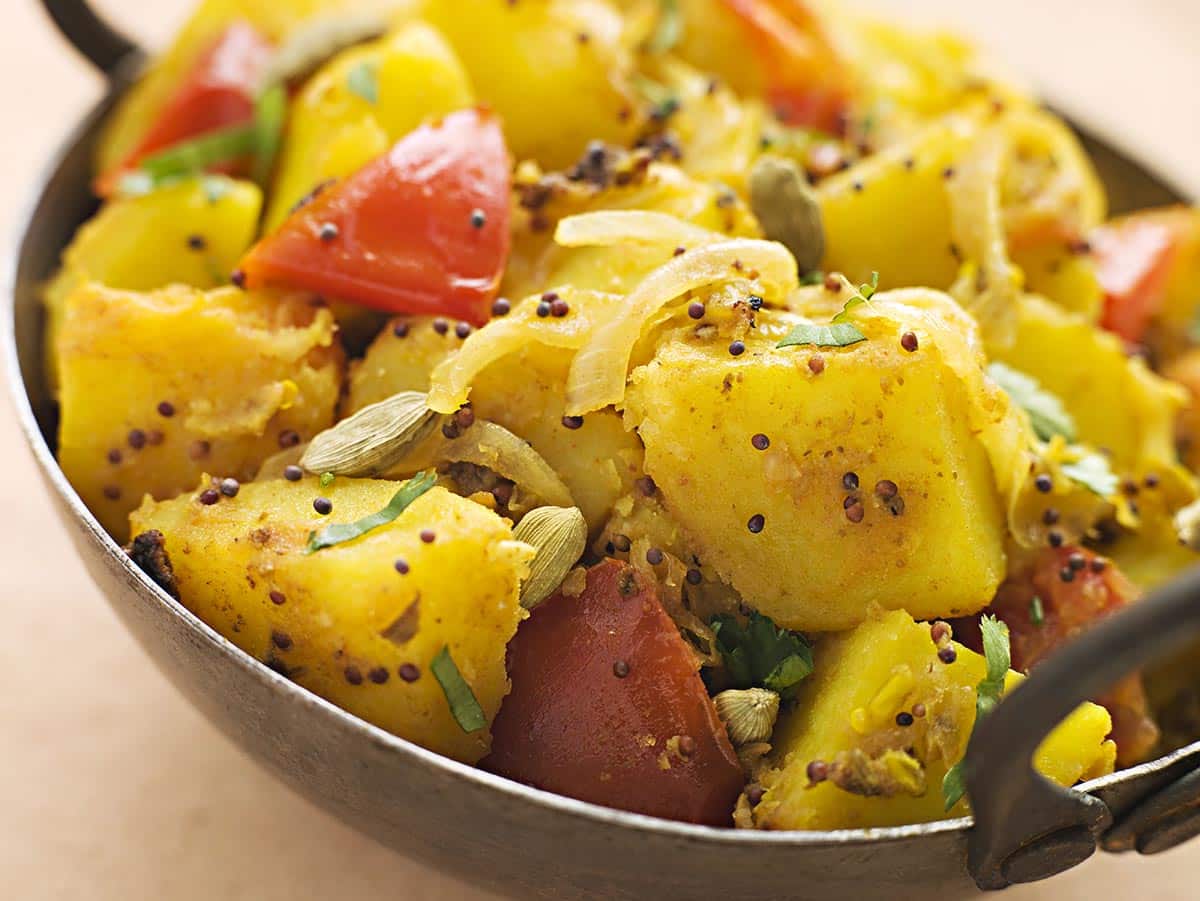In this article, we’ll share the best Kasoori methi substitute you can use in your cooking, including fresh fenugreek leaves, celery leaves, and other herbs and spices that can provide similar flavors and aromas.

Kasoori methi, also known as dried fenugreek leaves, is a popular spice used in Indian cuisine.
It is made by drying fenugreek leaves and then crushing them into a fine powder or leaving them in their whole form.
At first glance, it’s easy to mistake kasoori methi for mustard greens or celery leaves. All three vegetables have bright green leaves with thin stalks.
Kasoor methi is a type of plant that’s commonly used both as an herb and spice.
Dried fenugreek leaves are ready to use as herbs. Meanwhile, fenugreek seeds are a staple spice in Indian cuisine. Locals also treat powdered fenugreek seeds like any other dry spice.

Kasoori methi has a strong, slightly bitter taste and a distinct aroma that is similar to celery, but with a more pungent aroma. It is commonly used in dishes such as curries, stews, and lentils to add flavor and depth to the dish.
When it comes to cooked kasoori methi, the plant has an overall aroma similar to maple syrup.
The plant’s leaves and seeds differ in terms of the flavor profile.
Dried fenugreek has a musky scent and a slightly bitter taste.
Locals describe the taste as a combination of fennel leaves and celery leaves. They would use dried fenugreek leaves to top curry dishes. This gives the dish structure and a herbal and savory flavor.
Fenugreek seeds carry the same mild bitter taste and musky scent as dried leaves. But the seeds lack the latter’s herbal and savory flavors. You can use fenugreek seeds like curry powder for recipes.
Kasoori methi is an essential spice in Indian cuisine. You can buy this plant in many countries around Asia. But it’s not as readily available in the United States.
When buying kasoor methi, we recommend looking at Indian or Asian specialty stores.
If you’re out of options, you can try these kasuri methi substitutes:
Fenugreek seeds are the best kasuri methi substitute. Since it comes from the same plant, you can expect them to have the same flavors. Also, fenugreek seeds can only add flavor since they’re a spice, but the leaves can make recipes bulkier.
There are many forms of fenugreek available on the market. You can use whole seeds or powdered fenugreek seeds. Since it’s a spice, you’ll need to add it at the beginning of the cooking process instead of at the end.
Maple syrup is also an excellent kasoori methi substitute. It may sound unconventional, but these two ingredients have one thing in common. Both kasoori methi and maple syrup have solotone.
Solotone is a compound that gives maple syrup its rich and savory flavors. When using it as a substitute, we recommend adding maple syrup at the end of the cooking process. Your dish will quickly absorb maple syrup if you add it at the beginning.
Keep in mind, though, that maple syrup is extremely sweet, so be sure to use the right amount.
Celery leaves are another fenugreek substitute that you can use. These leafy green vegetables have the closest resemblance to fenugreek’s flavors. Celery leaves are also helpful in bulking up recipes.
We recommend using Chinese celery leaves as they are the best fenugreek alternative. Celery seeds can also help if you’re short on time. Compared to others, celery is one of the best substitutes for kasoori methi.
Spinach can also substitute for kasoori methi. This leafy green vegetable has the same musky aroma and bitter flavor of fenugreek. But if you’re looking to bulk up your curry dish, you’ll need a lot of spinach. These vegetables have high water content and quickly evaporate when exposed to heat.
When using spinach, we recommend pairing it with fenugreek seeds. This technique helps achieve the exact flavors you’re aiming for.
Collard greens are an excellent substitute for kasoori methi. They have the same herbal and bitter flavors. But collard greens may have a subtle minty aftertaste.
Nevertheless, these vegetables work great as an alternative. When substituting, remember to use a 1:1 ratio. Collard greens don’t shrink as much as spinach, so keep an eye on the rationing.
Watercress leaves, also known as “alfalfa,” are flowering plants. You can use this vegetable to replace kasoori methi. But keep in mind that watercress has a peppery aftertaste.
Watercress may be closer to celery in terms of taste, but it’s still a worthy substitute for fenugreek. It has a mild flavor with hints of nuttiness and sweetness.
Another substitute for kasoori methi is yellow mustard seeds. They have the same sharp, musky scent with a mild nutty flavor. Compared to fenugreek seeds, yellow mustard seeds become pungent when you bite them.
The closest flavor of mustard seeds is wasabi or horseradish. We recommend using mustard seeds for recipes that need fenugreek seeds.
Dried mustard greens are also a handy kasoori methi substitute. In some grocery stores, you can find mustard greens named “curly or curled mustards.”
This vegetable has the same slightly bitter note you’ll find in kasoori methi leaves. Mustard greens also add a rich aroma and deeply savory flavor.
Curry powder is an excellent kasoori methi substitute. It’s an easy alternative since curry recipes include fenugreek seeds.
Curry powder has an aromatic scent and a rich, savory taste. However, the spice on its own has a strong flavor. Adding too much curry powder may overwhelm the recipe.
Curry powder also affects the coloring of the dish. But if you don’t mind the flavors and colors, curry powder is an excellent option for kasoori methi.
There are also curry leaves available in most grocery stores. You can also substitute this with curry powder. It’s essential to remember that curry leaves taste slightly different. They don’t have the same flavor impact as curry powder blends.
It’s related to pea plants with a history that dates back 6,000 years.
The plant is also known as “kasoori methi” or “kasur methi.”
The name is of Punjabi origin, derived from the region of Kasur. Kasoor methi grows wild and abundant in these areas.
In Ancient Egypt, priests used fenugreek seeds in incense and embalming.
Farms also use dried fenugreek as fodder for livestock. In some cases, some imitation maple syrup also includes this herb.
Fenugreek’s most significant producer is India, and it’s readily available in India and Asia. But kasoori methi may be challenging to buy in Central America.
In India, locals use fenugreek to flavor curries, naan bread, and lamb or mutton stews.
Powdered fenugreek seeds are also essential in making curry powder.
One of the most popular recipes containing fenugreek is “aloo methi.” This recipe directly translates to “potato fenugreek curry.” This dish is a form of vegetable curry and is highly flavorful.
Fenugreek seeds are also essential when making the paste for basturma. It is an Armenian recipe where you season the beef in the paste and let it air-dry for days.
In Egypt, locals boil fenugreek seeds and add them to coffee. You can also infuse fenugreek in herb stews to make them more flavorful.

Apart from its culinary uses, kasoori methi is also believed to have several health benefits.
It is thought to aid in digestion, reduce inflammation, and regulate blood sugar levels.
Fenugreek is rich in vitamins C and K, which are essential nutrients for the immune system.
When looking at fenugreek for its health benefits, we recommend buying it fresh. Dried fenugreek leaves may contain fewer amounts of vitamin C.
Kasoori methi is also rich in nutrients like rutin and quercetin. These compounds contain antioxidant properties that may reduce inflammation. They may also help fight off heart diseases and various conditions.
Another benefit is its fiber content. As a green leafy vegetable, it’s not surprising that kasoori methi contains tons of fiber. This type of carbohydrate helps in regulating blood pressure and improves gut health.
Kasoori methi is “fenugreek” in English. The name “kasoori methi” comes from the region where the plant originated – Kasur in India.
Fenugreek and dried fenugreek leaves can last up to 1 month in the fridge. You can also store fenugreek seeds for up to 3 years. Make sure to keep either in airtight containers.
Kasoor methi, or “fenugreek,” is a pea plant commonly grown in India. The herb comes in four forms: fresh, dried, seeds, and powdered. You can use it both as a herb and spice. Fenugreek has a musky scent and a slightly bitter taste.
Kasoori methi is a staple in Indian cuisines, like curry dishes or naan bread. Celery is the best kasoori methi substitute for fenugreek leaves. You can also replace the fenugreek seeds with yellow mustard seeds.





